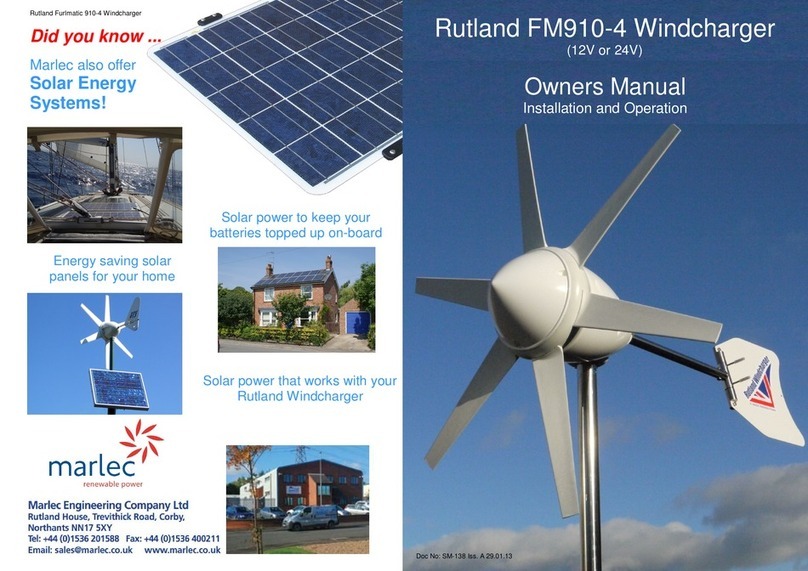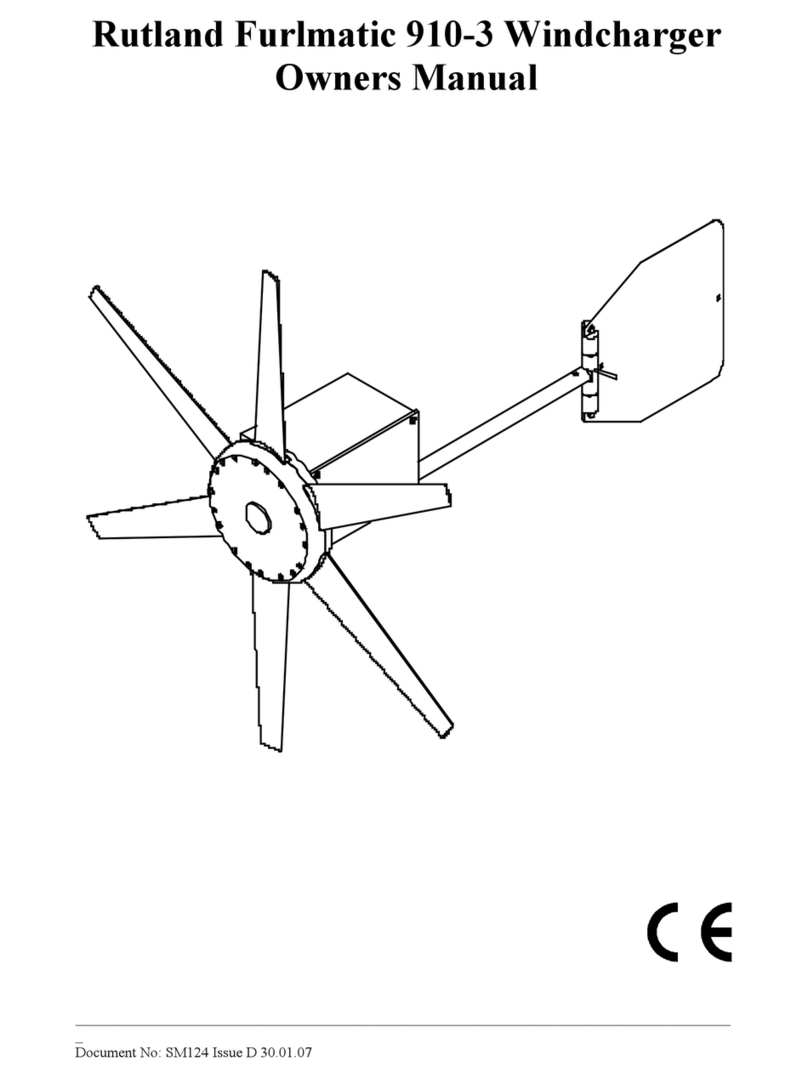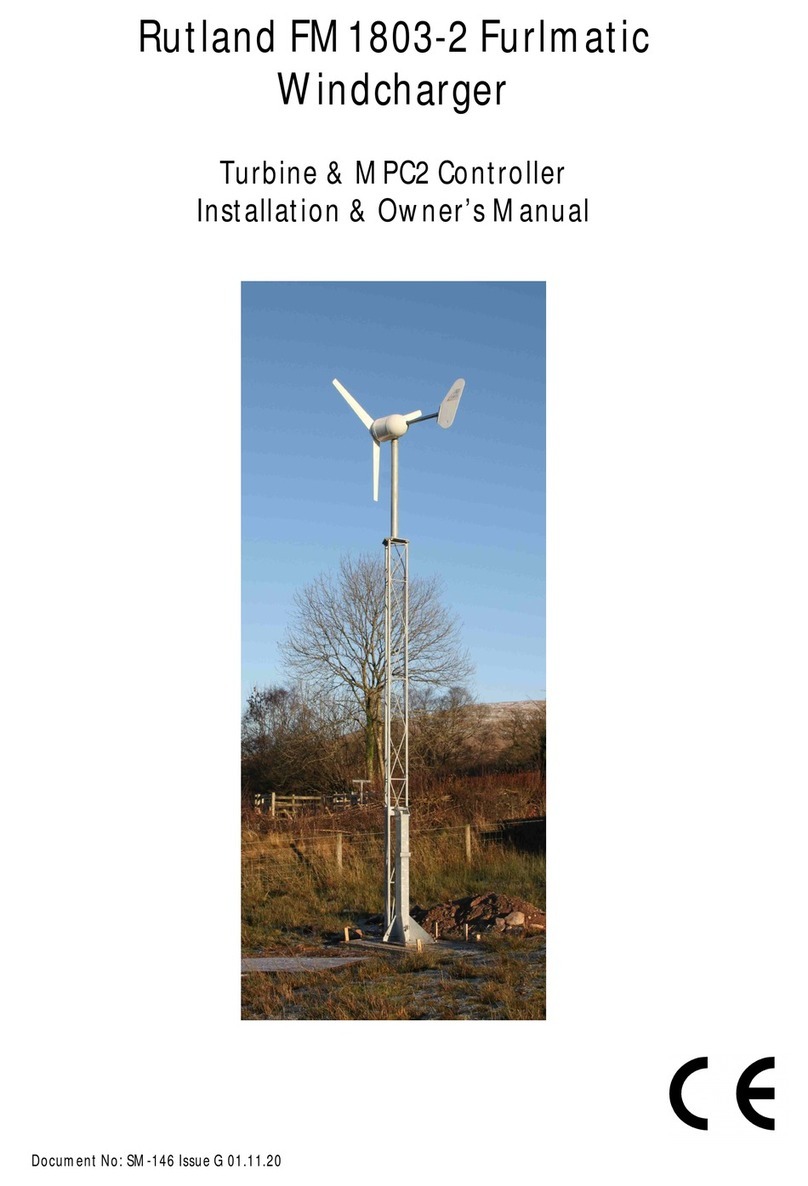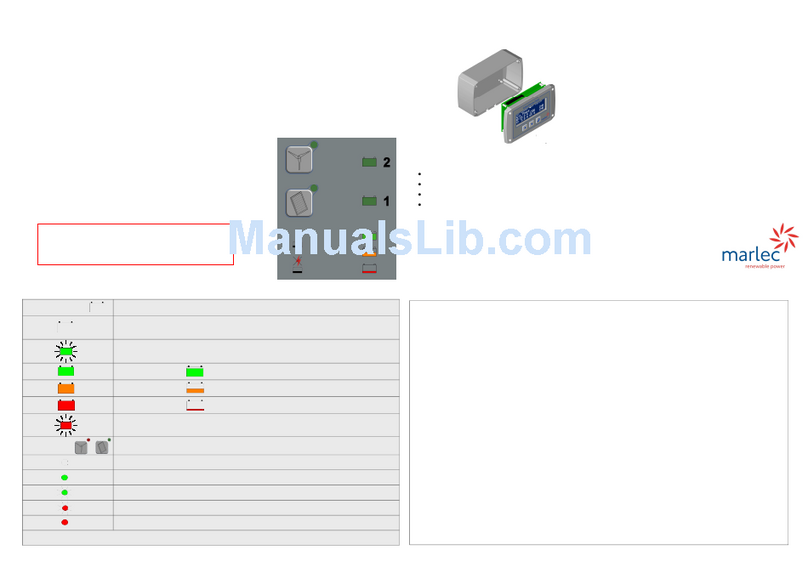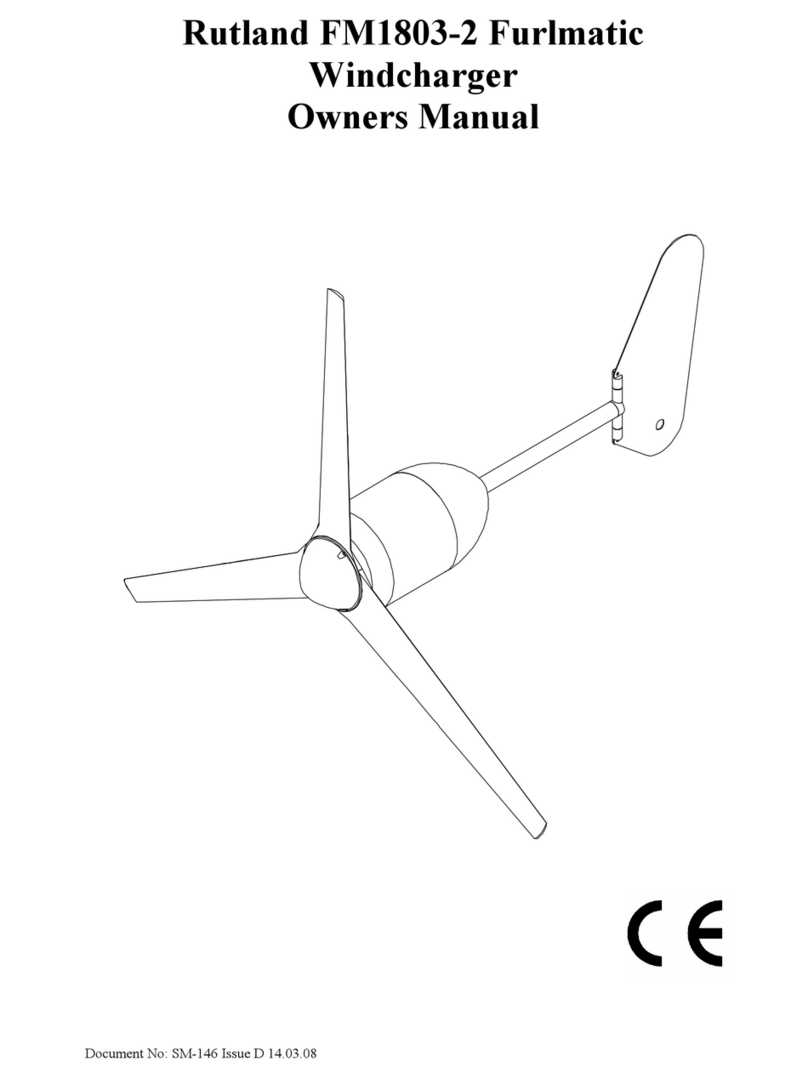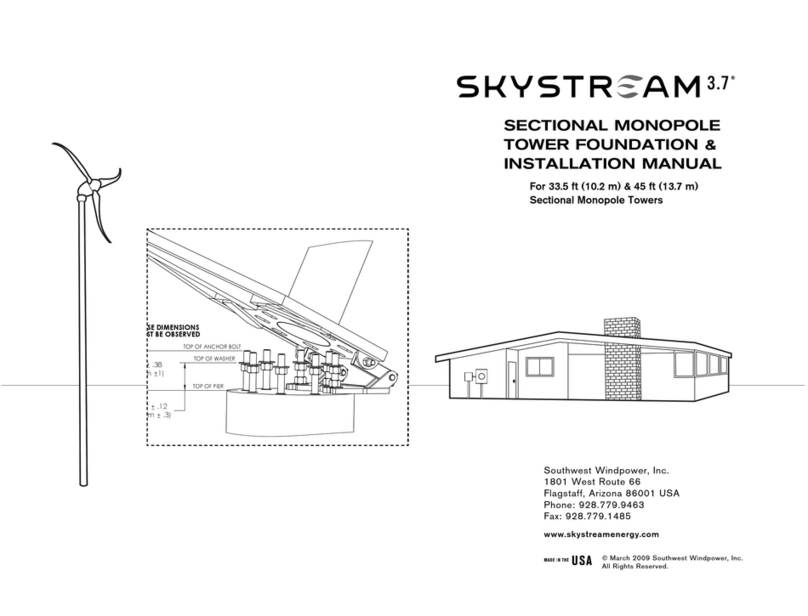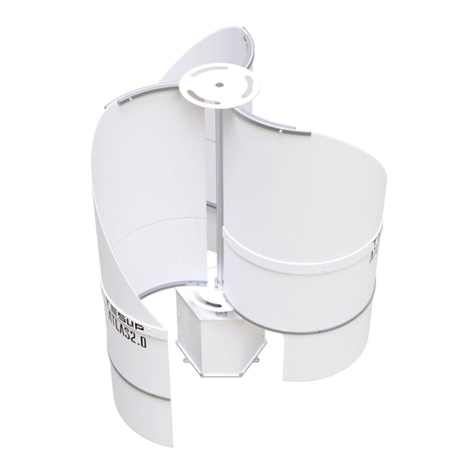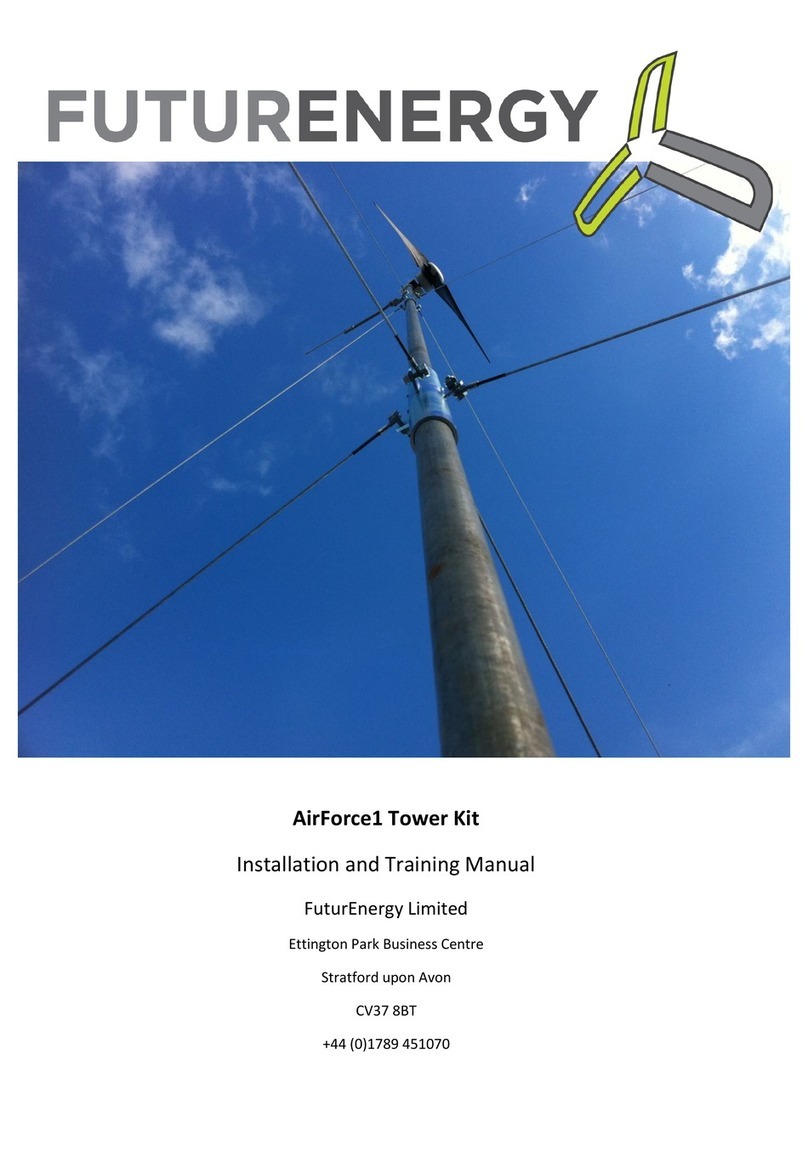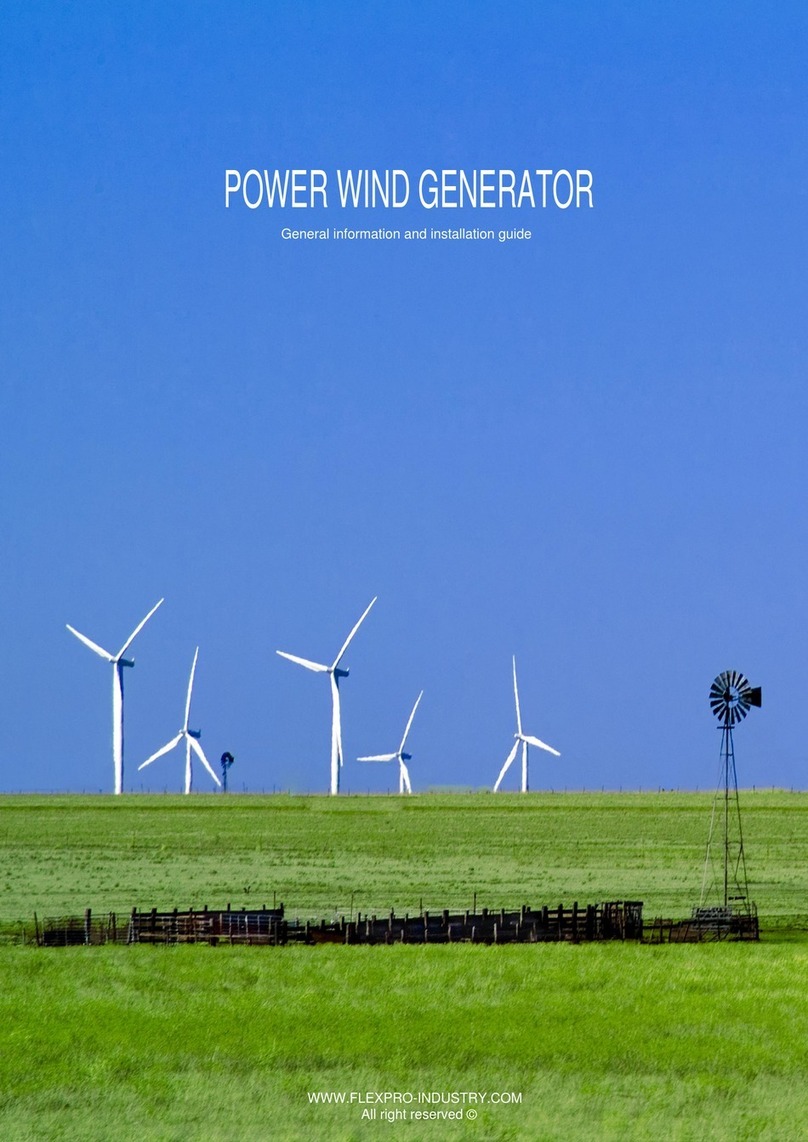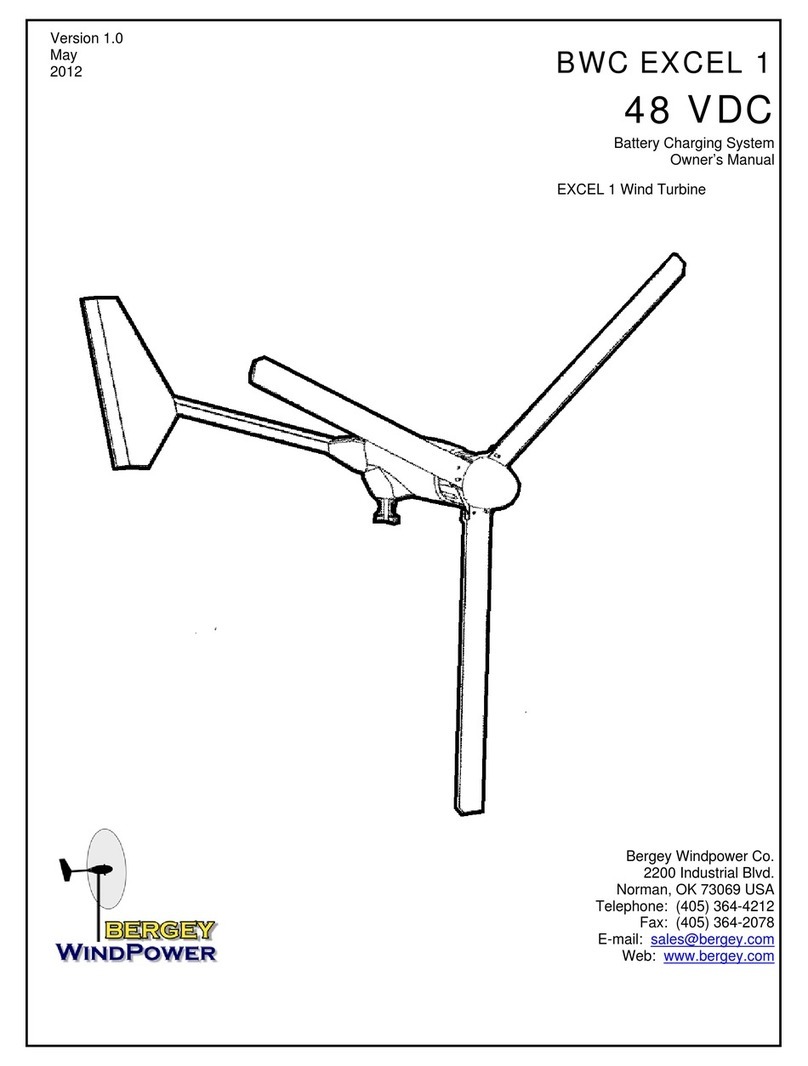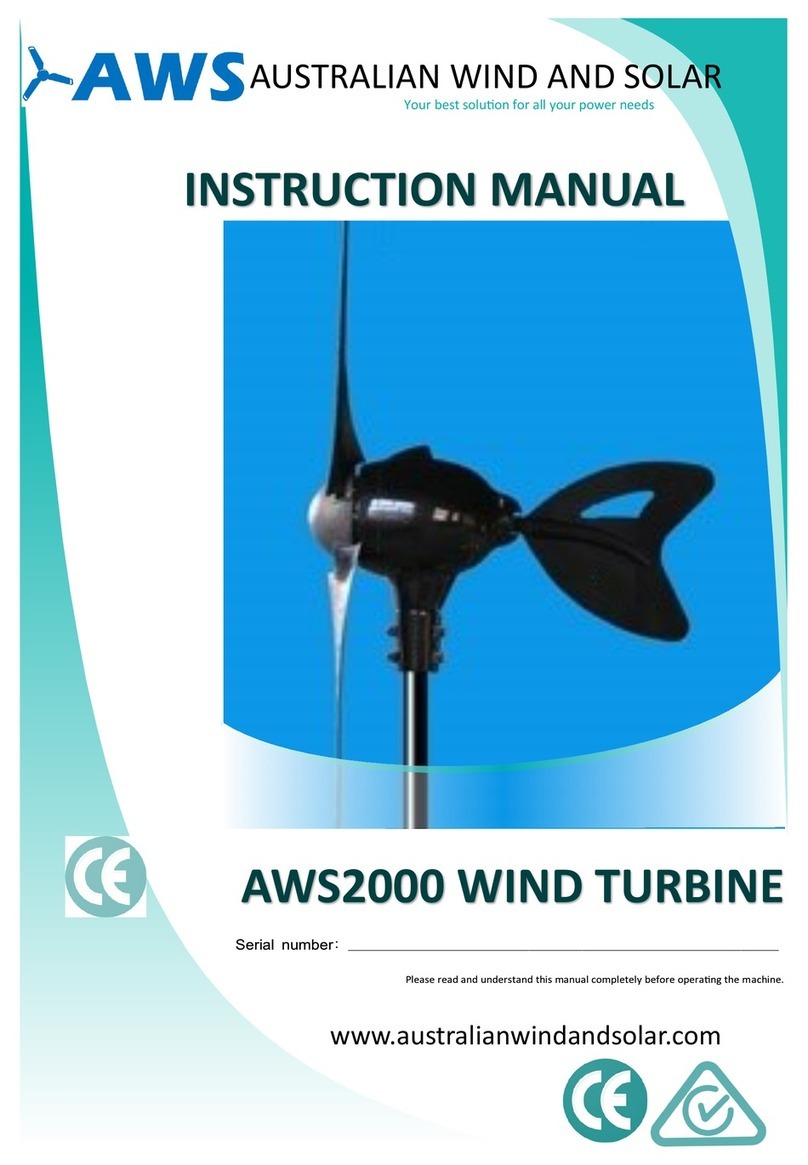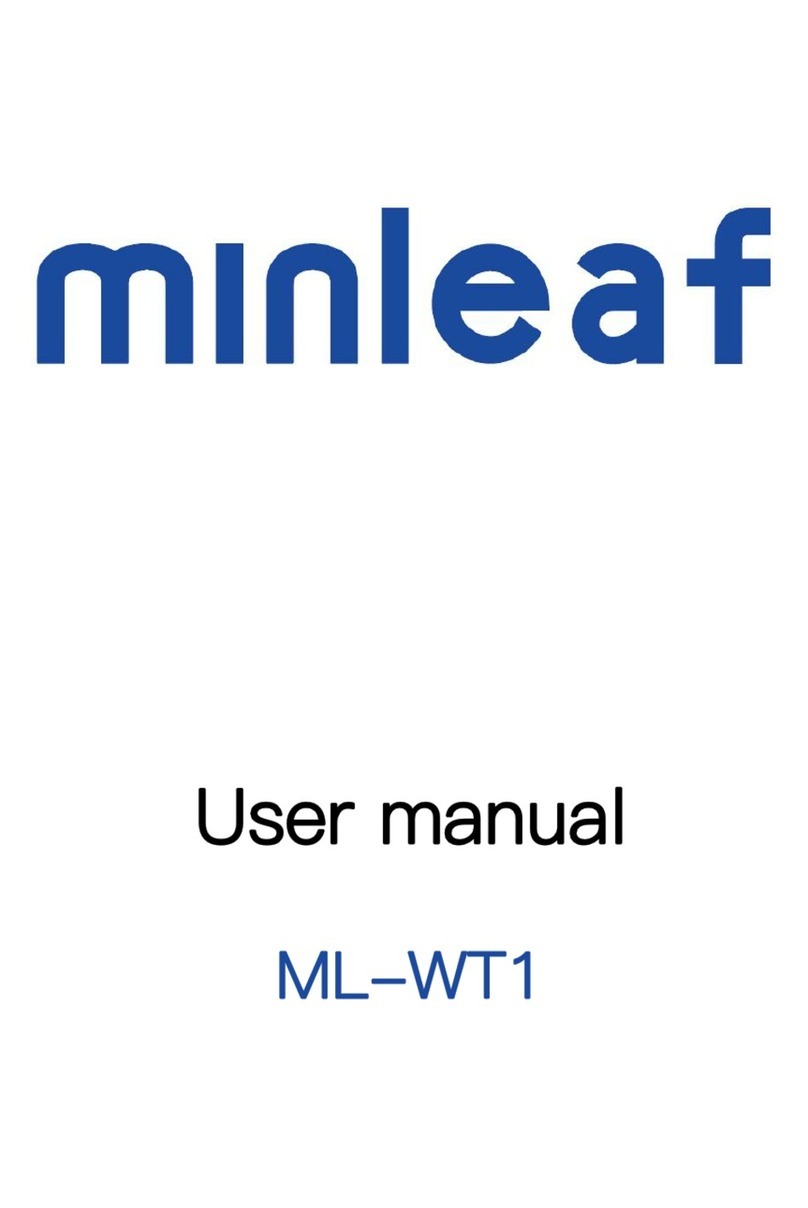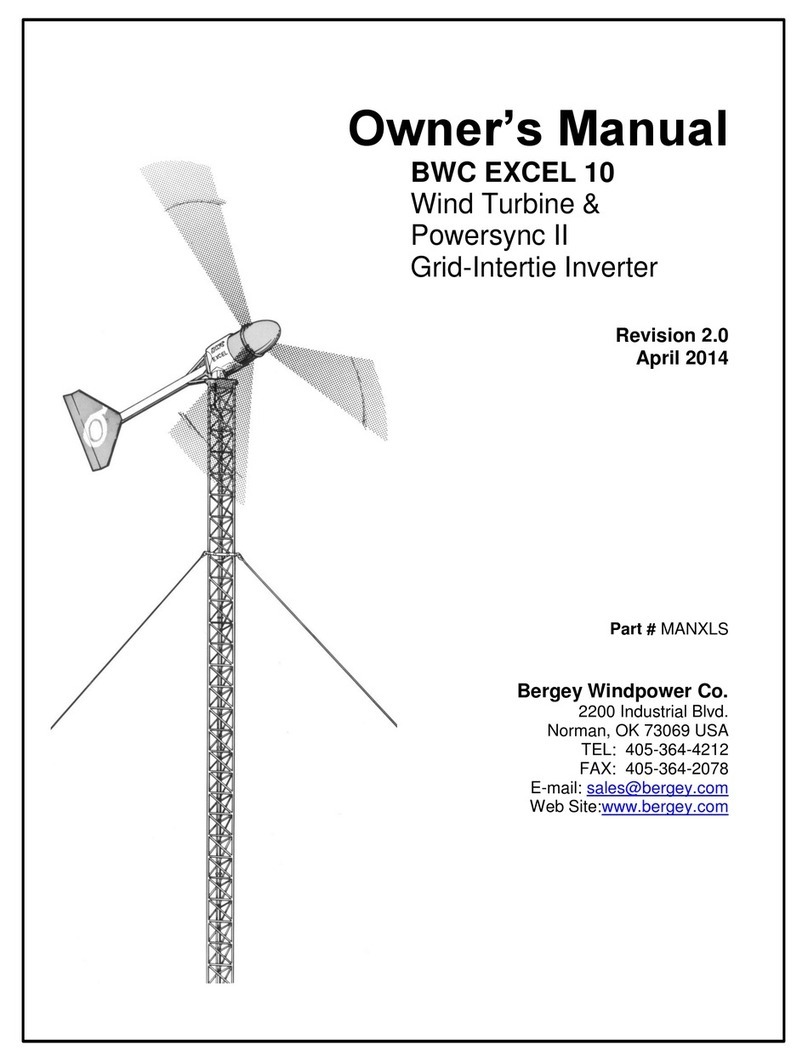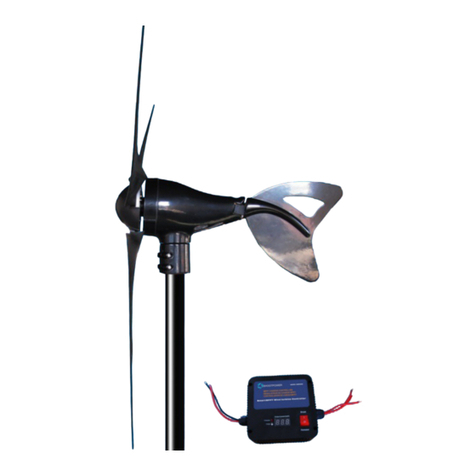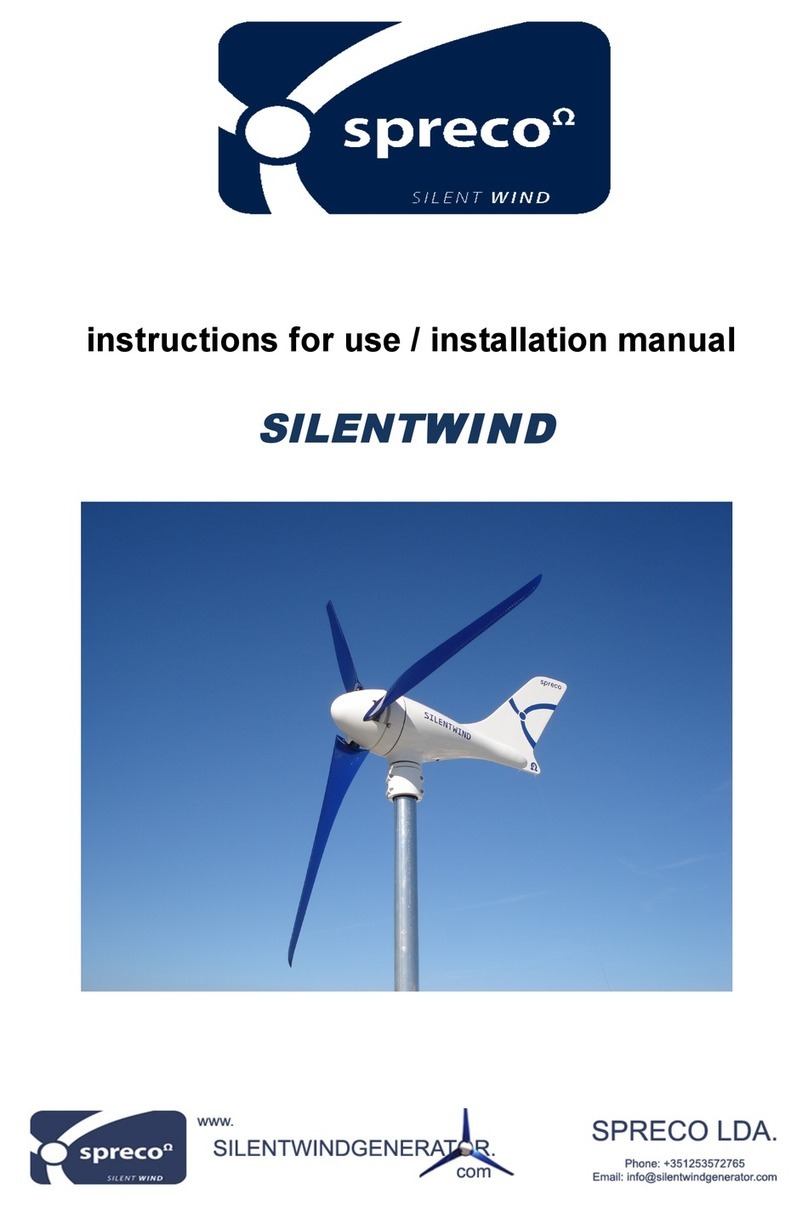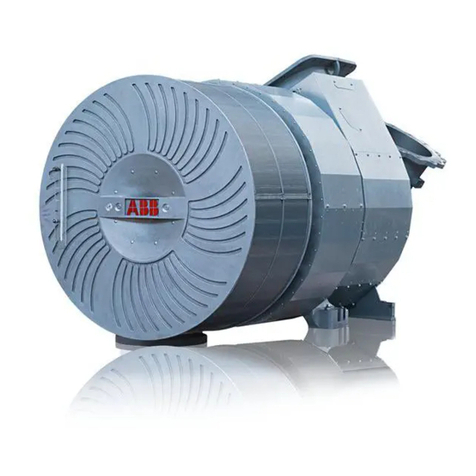On Board Systems
Land Based Systems
The smooth flow of wind over land and water is often interrupted by a multitude of obstructions causing wind sheer and turbulence. The location and height
of the mounting pole or tower for the wind turbine will be the major factor in the overallperformance and lifetime of the system.Wind speeds decrease and
turbulence increases where obstructions exist so the siting of the turbine is very important to ensure good yields and turbine lifetime. On yachts, the open
water will deliver better yields than in typically sheltered marinas.
The Wind Turbine should be mounted in a safe
position, a minimumof 2.7 metres above the deck
and away from other obstacles which could
interfere with the blades or tail assembly.
The pole should be supported to maintain it in the
upright position against lateral movement in high
winds.
The Rutland Marine Mounting Kit & Stays Kits are
available for deck mounting. We suggest the
following mountings according to preference:
Tower Selection
River Boats
A pivot pole is ideal for riverboats as this enables
the turbine to be easily raised and lowered. Rigid
stays are required to support the upright pole.
Push Pit
A suitable pole mounted to the deck with deck
plates and stays is the most popular method of
mounting the wind turbine on yachts, eg. Rutland
Marine Mounting & Stays Kit
For good performance mount the Rutland 1200 at
a minimum of 6m above ground level following the
siting guidelines.
Pivot type towers are suggested for ease of raise
and lowering. Performance is impaired if the
tower is not maintained vertical in operation.
Lattice or other types of freestanding columns can
be selected. Ensure that all loadings are calculated.
Freestanding Tower
A tower can be erectedusing a 6.5metre (21 feet)
galvanised (medium) tube and must be supported
by a minimum of two sets of four guy lines. The
Marlec Land Tower & Tower Rigging Kit are
available at www.marlec.co.uk
Rotor Blade Assembly
1.Place a M6Nylock nutinto the nut recess in the
aerofoil blade.
2.Align with a hole inthe Rotor HubPlate and
partly tighten a M6screw infrom the back of the
plate. Repeat with 3fasteners on all 3blades.
Caution - All 9 screws must be fitted!
Fit the Main Shaft Nut
1.Fit the M16 Nylock nut (supplied pre-greased)
into the recess created by the 3 blades.
2.Finish tightening the M6 blade screws using a
10mm spanner from the back of the Rotor Hub
Plate. Hold the blades near theroot to avoid
damaging the aerofoils. Check tightness of all
screws but do not over-tighten.
Assemble and Install the Turbine
Fitting the Rutland 1200to the Tower
Select an aluminium or stainless steel tube.
Internal diameter 41mm (1⅝”). For blade
clearance the pole must not exceed 48.5mm(2’’)
outside diameter for the top 0.6m.
Drill 2 holes diametrically opposite as shown.
Connect the Cables - See table in Manual Part 2
1.Thread the 3 core turbine cable through the pole
allowing at least 1m of extra cable for lifting the
turbine on and off.
2.Strip back 10mm of the wind turbine and tower
cables. Join them using the 3-way connector block.
Wrap the connection with insulation tape to
secure and protect from the environment.
Alternativelyjoin the cables using a latching plug
andsocket. Loop back the cable and secure witha
cable tie to provide strainrelief to the joint.
3.Coat the post adaptor with petroleum jelly to
protect it.
4.Carefully push the cables down the pole as you
slide the post adaptor into position, lining up the
screw holes.
5. Secure in place with the M10screws and shake-
proof washers using a 17mm spanner. Tighten up
to the shake-proof washer finishing with the head
in either of the positions shown ready for fitting
the pole fairing.
20mm
Fit the Turbine to the Generator
1. Offer up the rotor blade assembly to the
generator and place thegreased M16 Nylock nut at
the centre over the windshaft.`
Hold the blades near the root to avoid damaging
the aerofoils. CAUTION: The blades are sharp.
2. Carefully start to screw the rotor blade assembly
onto the windshaft by turning it clockwise. When
engaged place the 6mm Allen key provided at the
centre of the shaft and hold this firmly as you
continue to screw the rotor to full tightness.
IMPORTANT: Ensure the turbine hub plate is
squarely located on the shaft’s shoulder.
At this time you should restrain the turbine from
turning or keep the mounting pole lowered. If the
cable is already connected to the controller the
turbine will be prevented from turning.
Fit the Nose Cone
1.Locate the nose cone over the rib on the rotor
blade assembly and align the 3 screw holes.
2 . Secure nose cone using the 3 No3x10 Plastech
screws and a PZ1 screwdriver.
Fit the Pole Fairing
Note: For thick wall poles the tab on the inside of
the fairings should be trimmed back to the step as
indicated.
1. Push the Pole Fairing over the M10 Hexhead.
This also acts as a locking device.
2. Screw together the pole fairing using the 4
No3.5x10 Plastech screws and a PZ2 screwdriver.
Before raising the tower or allowing the turbine to
rotate follow the Commissioning section inthe
Manual Part 2
Commissioning
Turbine Dimensions
Turbine Orientation
The Rutland 1200 is designed
for use in the orientation
shown in this manual it
should not be installed and
operated upside down.
48.5mm
41mm
11mm
Siting the Turbine
Base Pivot Tower

